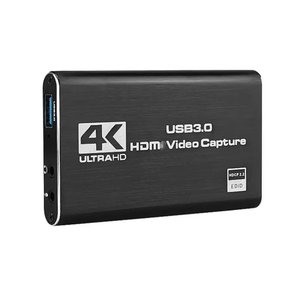
All categories
Featured selections
Trade Assurance
Buyer Central
Help Center
Get the app
Become a supplier

(833 products available)





















































Data Rates:
HDCP 1.x: The HDCP 1.x version supports digital connections such as DVI and HDMI. It has an HDCP-compliant DVI receiver capable of 1.0 Gbps, and HDMI receivers are suitable for up to 2.25 Gbps.
HDCP 2.2: HDCP 2.2 supports data rates of up to 18 Gbps, allowing 4K resolution at 60 Hz with 4:4:4 color sampling.
Key Length:
HDCP 1.x: HDCP 1.x uses a key length of 40 bits, which was sufficient for the time but considered weak by today's standards.
HDCP 2.2: HDCP 2.2 uses a key length of 128 bits, providing a much stronger level of security against eavesdropping and other attacks.
Authentication Process:
HDCP 1.x: The authentication process for HDCP 1.x is relatively simple, with a single round of authentication between the source and the sink.
HDCP 2.2: HDCP 2.2 uses a more complex authentication process with multiple rounds of authentication. This makes it more resistant to attacks and ensures that only authorized devices can receive content.
Device Classes:
HDCP 1.x: HDCP 1.x does not specify device classes for sources, sinks, and repeaters.
HDCP 2.2: HDCP 2.2 defines device classes and specifies features for each class. For example, a Class 1 device is a basic source or sink that meets minimum HDCP requirements. Class 2 devices are more advanced and can support additional features such as key revocation.
HDCP 2.3: HDCP 2.3 introduces several enhancements over 2.2 to further strengthen security and improve performance.
Improved Key Management:
HDCP 2.3 introduces a new key management scheme that makes it easier to manage keys across multiple devices. This helps ensure that only authorized devices can receive content.
Enhanced Authentication:
HDCP 2.3 uses a more secure authentication process that reduces the risk of attacks. This includes using strong passwords and verifying the identity of devices before allowing access to content.
Revocation:
HDCP 2.3 can revoke keys for devices that are no longer authorized to receive content. This helps ensure that only authorized devices can access protected content.
Device Management:
HDCP 2.3 includes features for managing devices in a network. This helps ensure all devices meet HDCP requirements and can communicate securely.
Stream Management:
HDCP 2.3 introduces features for managing streams in a network. This helps ensure all streams meet HDCP requirements and are delivered securely.
Backward Compatibility:
HDCP 2.3 is designed to be backward compatible with HDCP 2.2. This means that devices supporting HDCP 2.3 can communicate with devices supporting HDCP 2.2.
Maintaining HDCP capture is essential for ensuring the security and integrity of digital content. Here are some tips for maintaining HDCP capture:
Keep Software Up to Date:
It is vital to keep the software used for HDCP capture up to date. Software updates often contain bug fixes, performance improvements, and new features. Additionally, software updates can include changes to maintain compliance with HDCP standards.
Check Cable Connections:
Regularly check that the cables used for HDCP capture are securely connected. Loose cable connections can cause HDCP authentication failures and affect capture performance.
Use Quality Cables:
Using high-quality cables can help ensure reliable HDCP capture. Cheap or damaged cables may not comply with HDCP standards and can cause problems.
Monitor Device Compatibility:
When using multiple devices for HDCP capture, it is vital to ensure that all devices are HDCP compliant and compatible with each other.
Follow HDCP Capture Device Instructions:
Many HDCP capture devices have specific maintenance requirements. It is vital to carefully read the device instructions and follow the manufacturer's recommendations.
Choosing the right HDCP capture device for a particular situation requires careful consideration of a number of factors. Below is a comprehensive guide on how to select an appropriate HDCP capture device.
Replacing or installing an HDCP capture device is a straightforward process that does not necessarily require an expert. Following the manufacturer's instructions makes the process easier. Below are some simple steps on how to install an HDCP capture device:
1. Find a suitable location on the computer where the HDCP capture device will be connected.
2. Open the computer and locate the motherboard.
3. Locate an available PCIe slot on the motherboard.
4. Remove the metal bracket cover from the PCIe slot where the capture device will be installed.
5. Insert the HDCP capture device into the PCIe slot. Ensure it is properly aligned and firmly seated.
6. Secure the device with screws or a retaining clip, if applicable, to ensure it is securely attached to the motherboard.
7. Close the computer case and power on the computer.
8. Install the necessary drivers and software from the manufacturer's website or included CD to ensure proper functionality and compatibility with the operating system.
9. Connect the HDCP capture device to the desired source device (e.g., gaming console, Blu-ray player) using the appropriate cables (HDMI or DisplayPort).
10. Connect the HDCP capture device to the computer using the corresponding interface (USB, HDMI, etc.) to enable data transmission and capture.
Q1: What is HDCP capture used for?
A1: HDCP capture is used to record and stream content from HDMI sources that have HDCP protection.
Q2: Does HDCP affect video quality?
A2: No, HDCP does not affect video quality. It is a digital rights management protocol that ensures the integrity of the video signal.
Q3: Which devices use HDCP?
HDCP is used by many devices, including Blu-ray players, game consoles, streaming devices, and HDMI capture cards.
Q4: Is there an HDCP bypass?
There is no legitimate HDCP bypass. Any tools or methods claimed to bypass HDCP are illegal and can lead to prosecution.